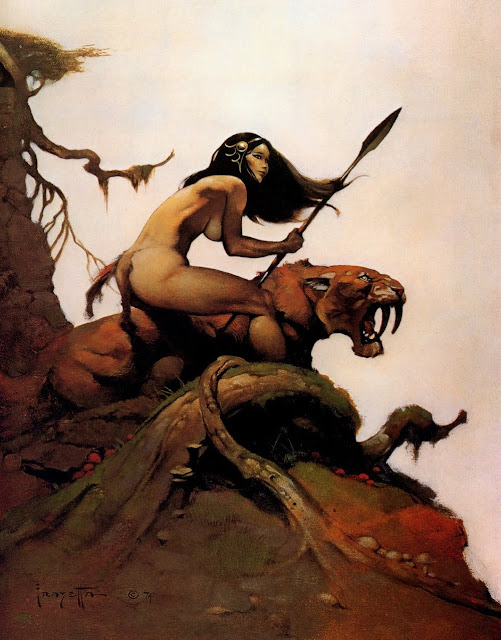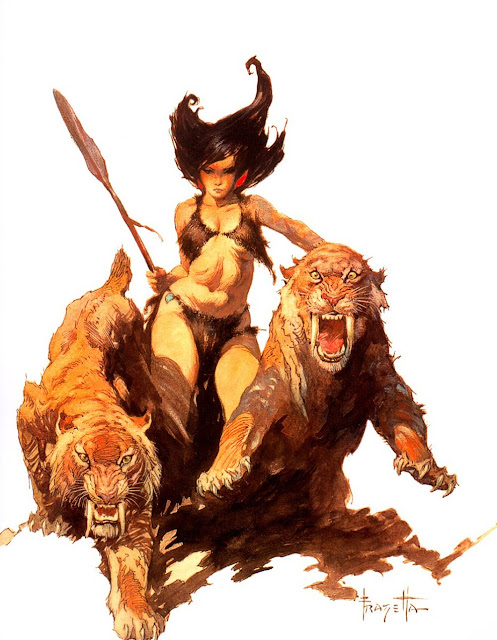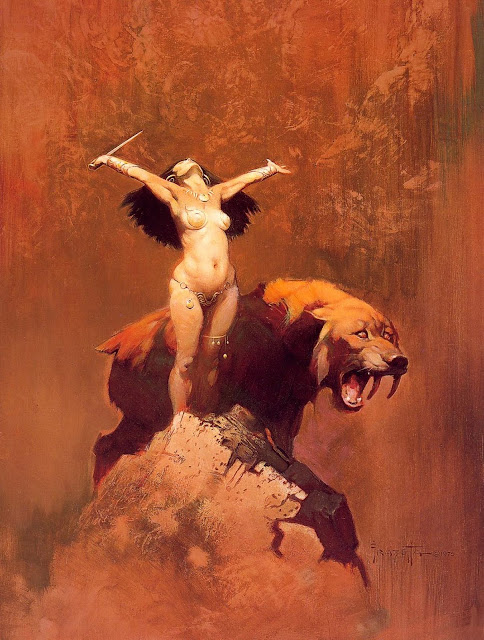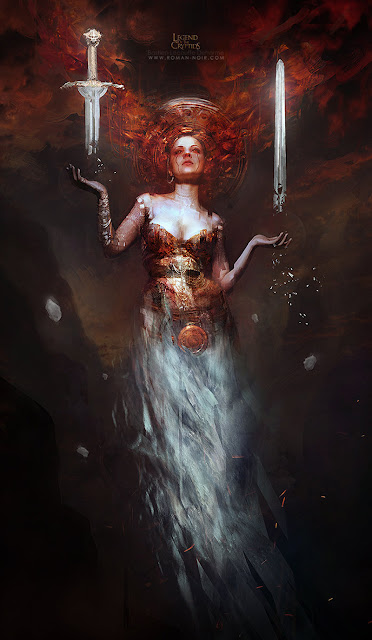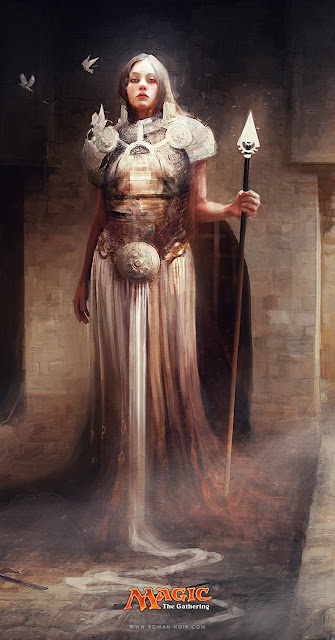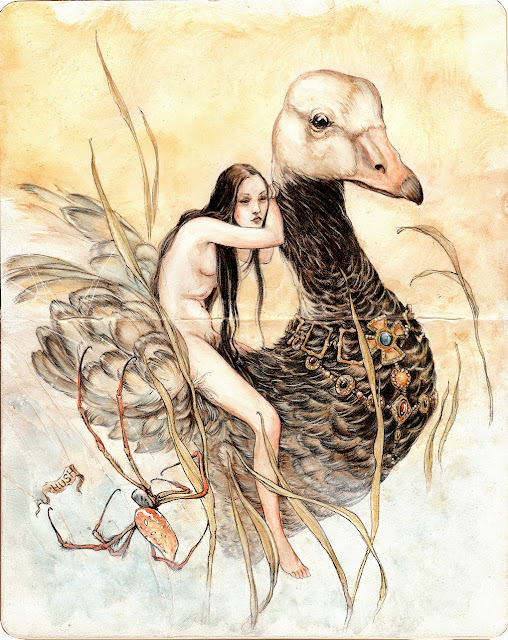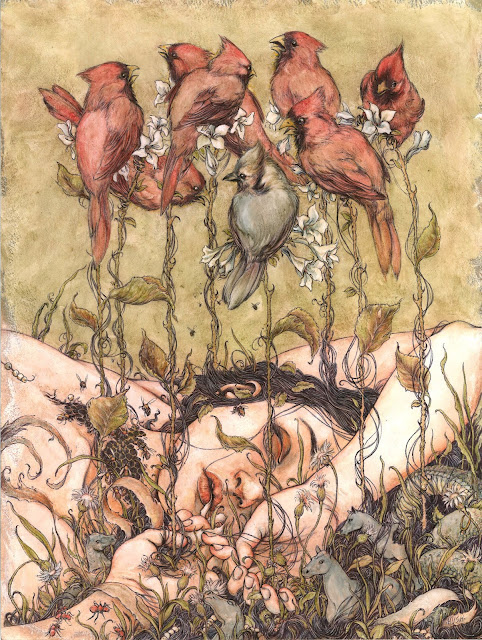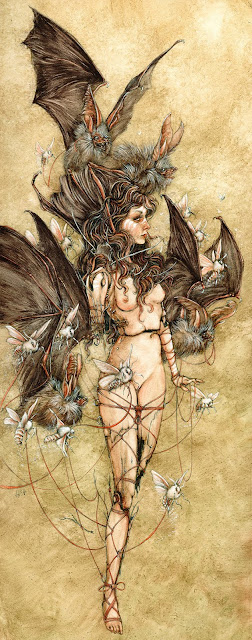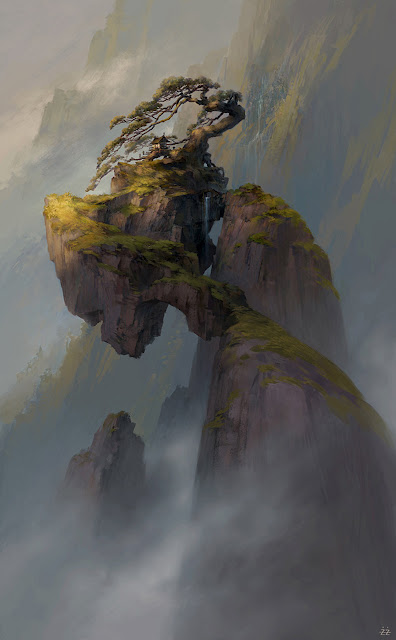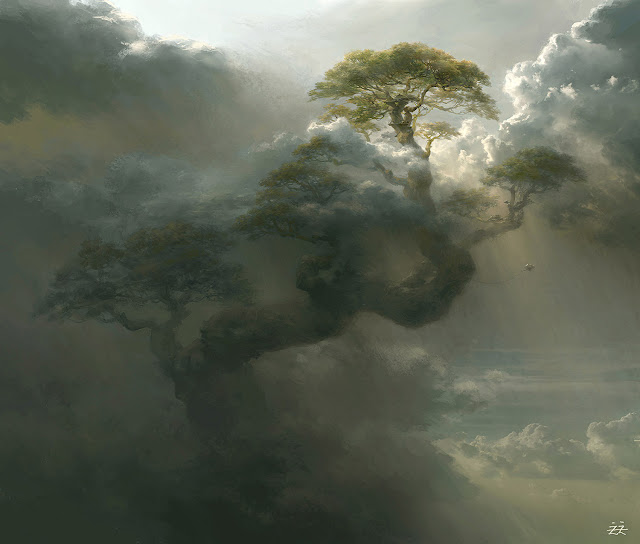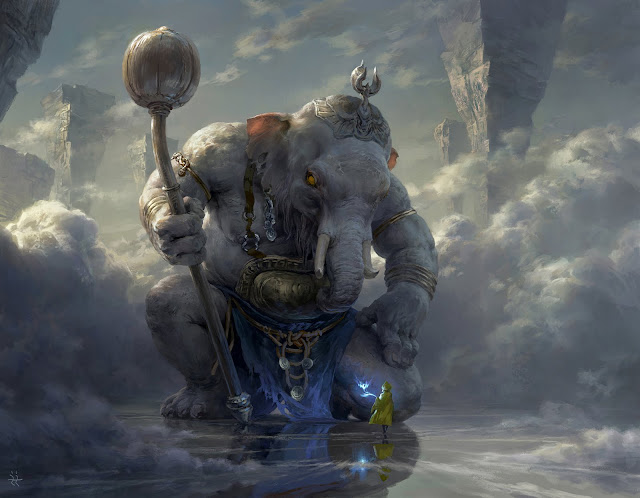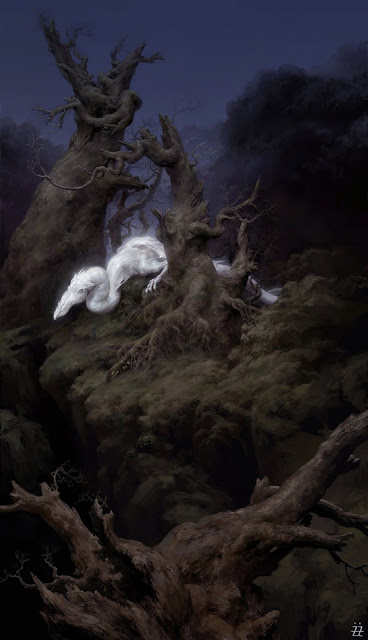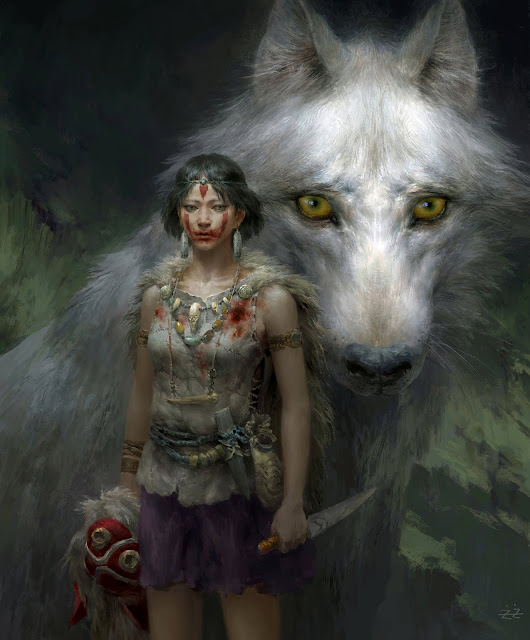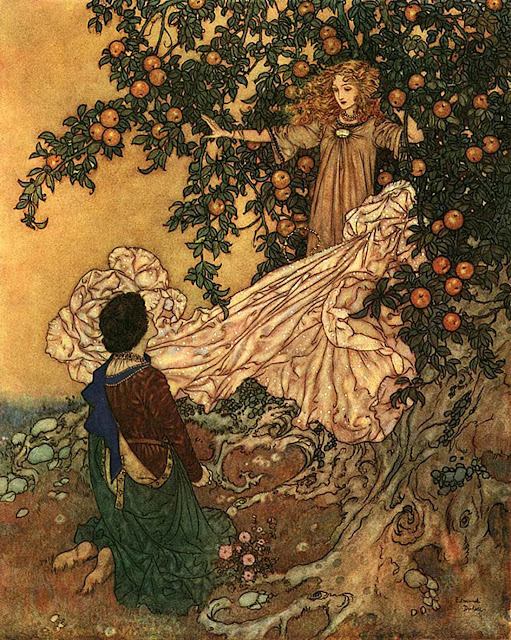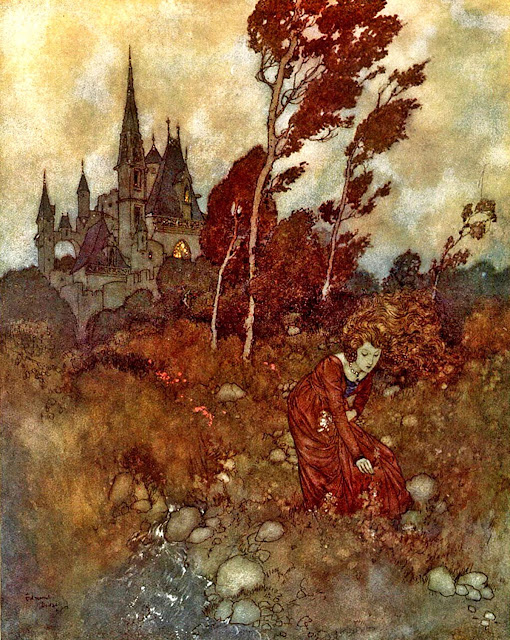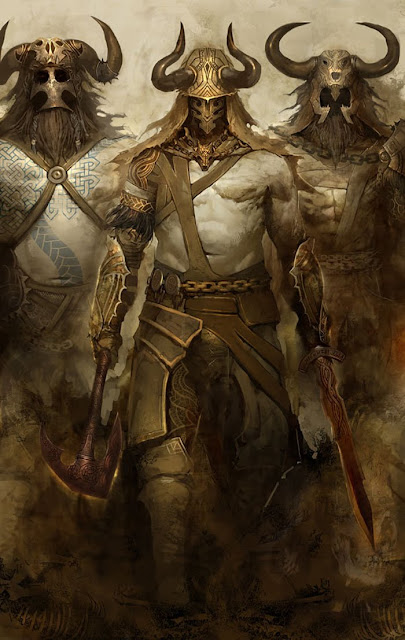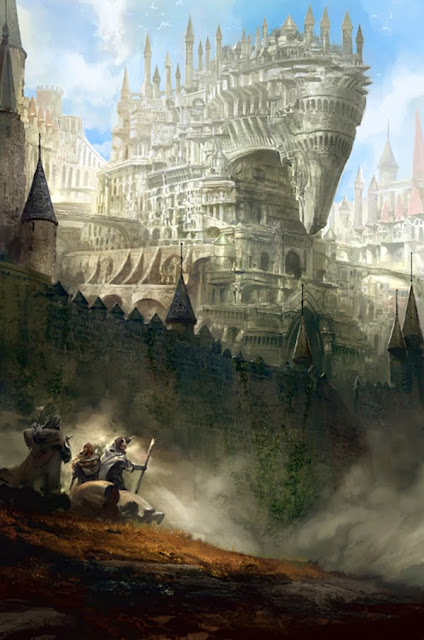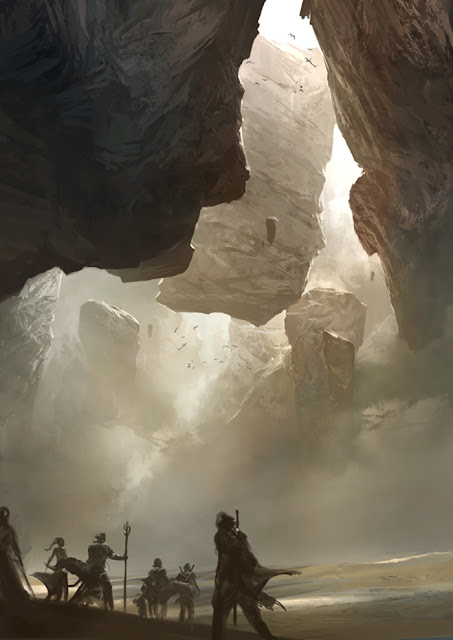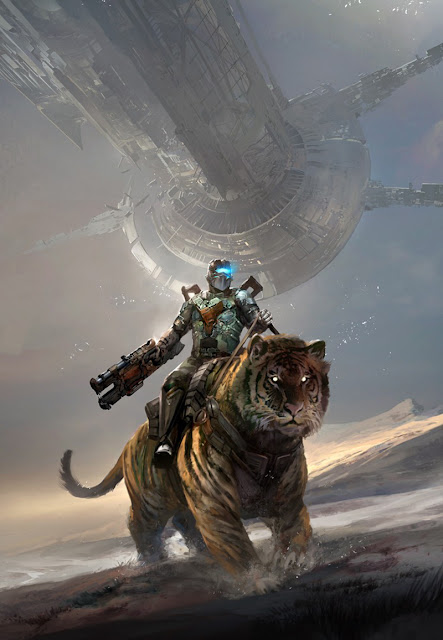Fantasy art icon Frank Frazetta is best known for painting women: a controversial point of gender critique that has drawn both detractors, who deride Frazetta's hyper sexualization of the female body; and supporters, who perceive Frazetta's women as empowered actors in control of their own sexuality. It's a can of worms issue that has been discussed at length by far more qualified people than me. Personally, I come down somewhere in the middle, recognizing a level of agency and authority in his depictions that is frequently undercut by an exaggerated level of objectification (Frazetta didn't just paint badass warrior princesses, he also painted a good number of damsels). The continuing critique is culturally important--especially within the cagey world of SFF--but not one that I'm going to rehash at length here.
What interest me in this piece is Frazetta's depiction of nature, specifically his almost obsessive employment of large cats. Panthers, tigers, leopards, jaguars and lions abound throughout his work. The man painted cats almost as much as he painted women--often in tandem and presumably in pursuit of a sexually charged feline aesthetic.
I would argue that it's difficult to find a popular artist so tangentially fixated on cats. There are plenty of painters who have employed feline symbolism in their work, and there are even more popular artists who supply the world with the thousands of kitschy house cat paintings that make their way into mass production, but few painters have engaged the feline world so thematically.
Something worthy of note, is the general subordination of the cats in relation to the women they accompany. They are almost always depicted as hunting partners, familiars, pets, or thralls. It's an aspect of Frazetta's work that has gone understudied, and one that further illustrates the complicated power dynamics at play within his art.
